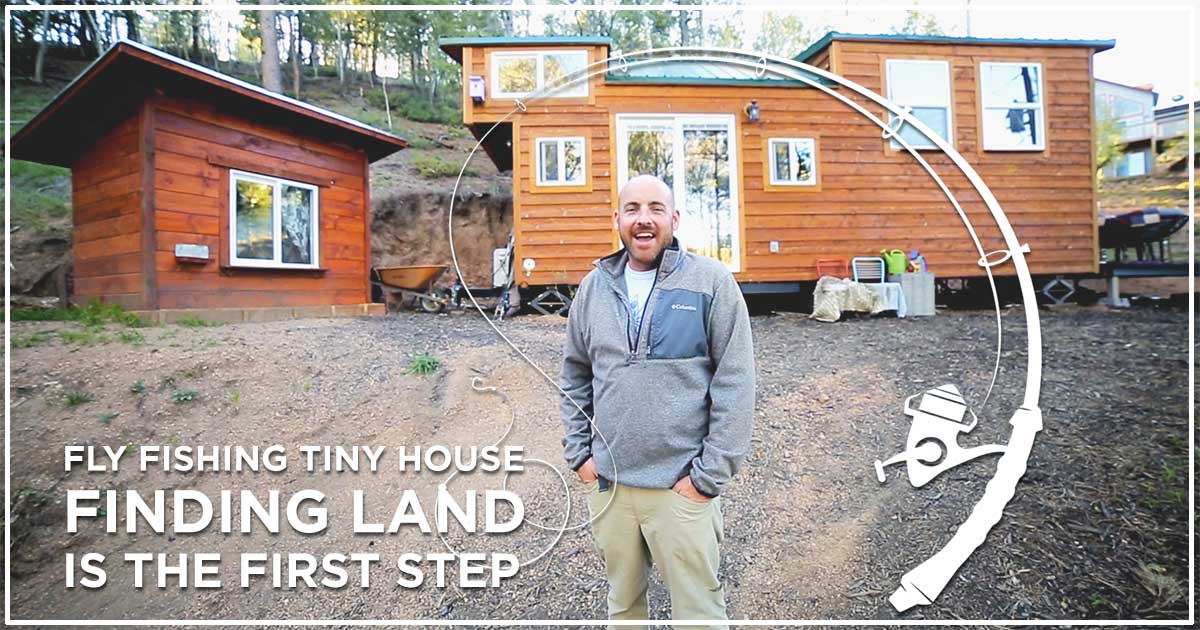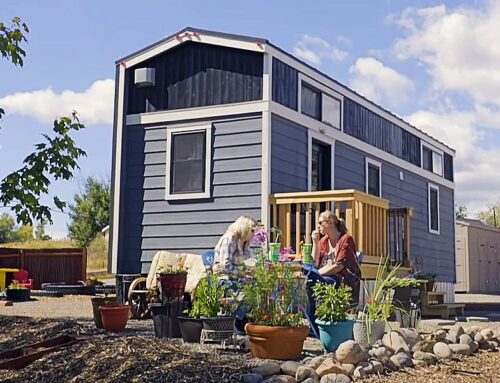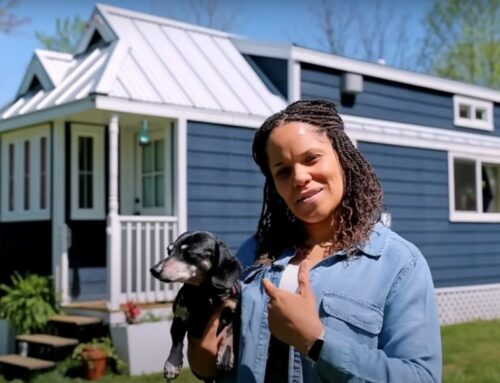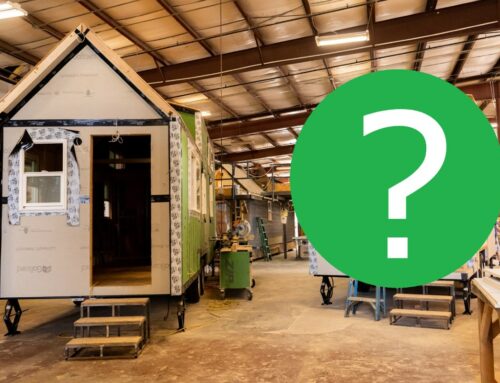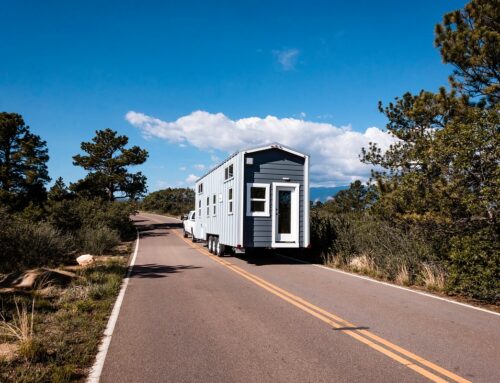Looking for Land for Your Tiny House?
If you ask tiny house enthusiasts where they want to park their tiny house, many are quick to reply, “on my own land!” But very few are aware of all that goes into single lot development. Unfortunately, it is not as straightforward as it might seem. There are many critical restrictions, risks and financial investment you need to consider. Finding land is just the first step.
Recently, we met up with Alan, a DIY tiny house RV owner. He parked on a beautiful wooded piece of land, located in a rural neighborhood outside of a Colorado mountain town. His small parcel was considered unbuildable. It is triangular-shaped and mostly uphill. Alan had to do significant grading work to create a level spot for his tiny house.
Alan had to bring power to his property and build a water storage shed. His neighborhood doesn’t offer water service. During this time, he made an effort to get to know the neighbors. Alan took it one step further by freely offering his manual labor to help them maintain their properties. He also signed up for private road maintenance duties with the local neighborhood group. In the end, Alan won over his neighbors support while creating a beautiful sanctuary, perfect as a fly fishing adventure basecamp.
If you plan on traveling with your Tiny House RV, read this article about finding parking for a tiny house.
Are you looking to follow in Alan’s footsteps?
4 Things You Need to Know
Where to Find Land
Available land and undeveloped lots are not abundant everywhere in the country and can be hard to find. Driving around in search of land for sale signs is not an efficient way to find land. Good news: more than ever before, there are more online land sales sites. These allow you to search by location, property type (farm, recreational, etc.), and special features. For more in-depth information about an available parcel, be sure to contact the realtor and local jurisdiction, city or county or both.
Search for land here:
Local Regulations
There are two big questions you need to answer for every piece of land for a tiny house you consider purchasing. How is it zoned? And what building standards are required? Zoning laws govern the use of property in a particular area, and what can be built on it. Building codes regulate the specific rules for constructing a structure and are enacted by the state, county, and city governments. While municipal or county governments create zoning ordinances.
There are counties with no zoning or building laws, but basic health and safety regulations will likely still be needed. If you find property free of restrictions, there are probably no building code requirements. This situation can vary. Deed and easement restrictions may still apply.
Always check with the county before buying land for a tiny house. You will learn what regulations and inspections are required, including sanitation and water. When Tiny Lots formed, a tiny house community in north Texas, the owners checked with the county to learn what rules applied to their rural property. The county told them the only requirement was a septic system. Brett and Mindy West (the owners) complied. They also took it upon themselves to install tie-downs for each tiny house, as a safety precaution from the regular high-winds.
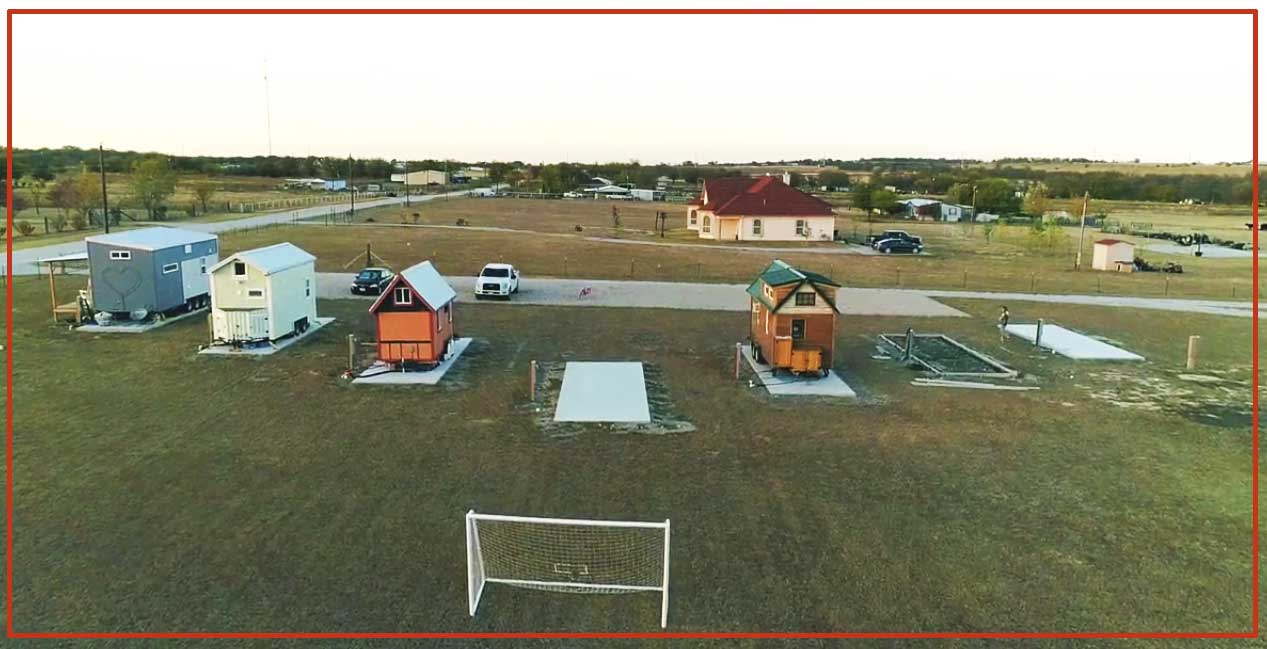
Tiny Lots in North Texas
Utility Considerations
So you found a beautiful piece of land to park your tiny house, but does it have power and water access? No available power means you need to create your own or pay to bring it to your property. Costs will vary depending on location. The further you are from utility connections, the pricier it will be to connect your property. In some areas, if you are close enough, there may be minimal. Same goes for water. If city water isn’t available, you will need to truck it in, as Alan does. Or you can also drill a well, which can cost anywhere from $1,500 to as much $10,000, plus permitting fees.
In most cases, to hook up both water and power, it will cost $10,000-$30,000. The most affordable route is to find undeveloped land that already has utility connections. Weigh the costs of all options to make the best decision for you. It’s also important to keep in mind the upfront costs and required maintenance for off-grid power options, like a wind turbine and solar power generator.
Don’t forget sewage! A new septic system can cost upwards of $5,000. Smaller houses require smaller systems and the good news is that translates to significant cost savings. Another popular option for tiny houses is a composting toilet. The byproduct can become actual humanure compost. To learn the ins and outs of how to properly execute this kind of composting system, read the Humanure Handbook. For household water and urine management, you can create a greywater filtration system. Be aware: your municipality or county may not allow this kind of water and waste management. Check your local regulations to know for sure.
Development Costs Can Add Up Quickly
If you are looking to purchase an undeveloped or raw land for a tiny house, you will need to consider what humanmade improvements may be desired and required. Most importantly think about how you will move your tiny house onto the property—an access road and or a driveway is a necessity. Alan had to clear and grade his lot before he could move onto it. The total cost of any land purchase, depending on where it is and the local regulations, could also include the following:
- property survey
- soil and water tests
- permits fees
- engineering services
- utility hookups
- tree removal
Be sure to investigate what expenses will be required to develop your land to prepare it for your tiny house RV. My advice: add a couple of thousand dollars cushion to your budget for any unexpected problems or fees.



